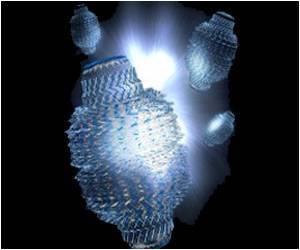With the help of an injectable hydrogel and a robot-assisted rehabilitation system, researchers have developed a technique for healing severe muscle injuries.
- Researchers have developed an approach to healing severe muscle injuries using an injectable conductive hydrogel and a robot-assisted rehabilitation system
- The hydrogel offers a tissue-like interface, promoting effective transmission of electrophysiological signals and long-term muscle tissue regeneration
- This novel solution for rehabilitation in cases of muscle injury, potentially revolutionizing the field of bioelectronic devices and soft tissue prostheses
Injectable tissue prosthesis for instantaneous closed-loop rehabilitation
Go to source). Their innovation combines an injectable tissue prosthesis, in the form of conductive hydrogels, with a sophisticated robot-assisted rehabilitation system. This novel approach offers new hope for those suffering from severe muscle injuries and the resulting loss of motor and sensory functions.
The Challenge of Severe Muscle Injuries
Imagine finding yourself in the vast expanse of the ocean, only to have a giant shark bite a substantial chunk of muscle out of your thigh. Such an injury would lead to a complete loss of motor and sensor function in your leg.Left untreated, this severe muscle damage typically results in permanent loss of function and disability. The question then becomes, how can one recover from such a catastrophic injury?
Conventional rehabilitation methods for muscle injuries have long sought an efficient closed-loop gait rehabilitation system that combines lightweight exoskeletons and wearable/implantable devices.
Such a prosthetic system is crucial to assist patients in the process of regaining sensory and motor functions, particularly those linked to nerve and muscle damage. However, existing electronic materials are often rigid and incompatible with soft tissues, causing friction and potential inflammation that can impede patient rehabilitation.
The Injectable Hydrogel Solution
To overcome these limitations, the IBS researchers turned to hyaluronic acid, a substance commonly used as a wrinkle-smoothing filler. They used this material to develop an injectable hydrogel designed for "tissue prostheses."This hydrogel can temporarily fill the void left by missing muscle and nerve tissues, providing essential support while regeneration occurs. What sets this hydrogel apart is its injectable nature, making it suitable for narrow, deep, or small areas without the need for invasive surgeries.”
The hydrogel boasts "tissue-like" properties, seamlessly integrating with biological tissues, even in hard-to-reach areas. Its reversible and irreversible crosslinks allow it to adapt to high shear stress during injection, ensuring excellent mechanical stability.
Additionally, the incorporation of gold nanoparticles imparts decent electrical properties to the hydrogel, facilitating the transmission of electrophysiological signals between injured tissues. Importantly, the hydrogel is biodegradable, eliminating the need for further surgeries.
Testing the Innovation
The researchers put their innovative approach to the test using rodent models. They simulated volumetric muscle loss injuries by removing a substantial portion of muscle from the hind legs of these animals.By injecting the hydrogel and implanting stretchable tissue-interfacing devices for electrical sensing and stimulation, they successfully improved the gait in the "injured" rodents. The hydrogel prosthetics were combined with robot assistance, guided by muscle electromyography signals, resulting in enhanced gait without the need for nerve stimulation.
Moreover, the conductive hydrogel significantly improved muscle tissue regeneration over the long term.
The injectable conductive hydrogel developed in this study excels in electrophysiological signal recording and stimulation performance, offering immense potential for various applications. It represents a fresh approach to the realm of bioelectronic devices and holds promise as a soft tissue prosthesis for rehabilitation support.
Professor SHIN Mikyung, emphasizing the significance of this research, stated, "We've created an injectable, mechanically tough, and electrically conductive soft tissue prosthesis ideal for addressing severe muscle damage requiring neuromusculoskeletal rehabilitation.”
"The development of this injectable hydrogel, utilizing a novel cross-linking method, is a notable achievement. It is believed to have applicability not only in muscles and peripheral nerves but also in various organs like the brain and heart.”
Professor SON Donghee added, "In this study, the closed-loop gait rehabilitation system involving the tough injectable hydrogel and stretchable, self-healing sensors could significantly enhance the rehabilitation prospects for patients with neurological and musculoskeletal challenges.It could also play a vital role in precise diagnosis and treatment across various organs in the human body."
The research team is now focused on further studies to develop new materials for nerve and muscle tissue regeneration that can be implanted minimally invasively. They are also exploring the potential for recovery in various tissue damages through the injection of the conductive hydrogel, eliminating the need for open surgery.
This groundbreaking research offers hope to those suffering from severe muscle injuries, opening the door to a brighter future of rehabilitation and recovery.
Reference:
- Injectable tissue prosthesis for instantaneous closed-loop rehabilitation - (https://www.nature.com/articles/s41586-023-06628-x)
Source-Medindia











